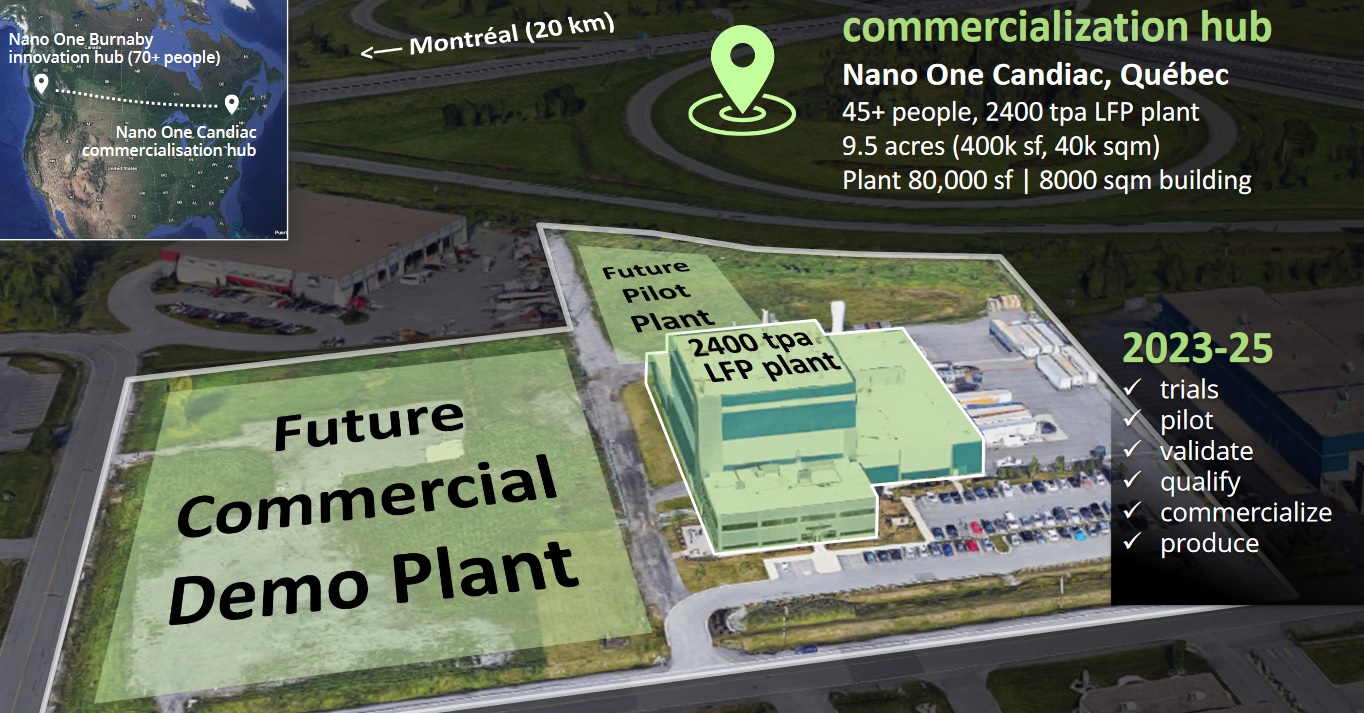Dan Blondal Positions Nano One for Major Share in Expanding LFP Market
During an engaging interview at PDAC 2024 with Tracy Weslosky of InvestorNews, Dan Blondal, CEO, Director, and Founder of Nano One Materials Corp. (TSX: NANO), shared insights into the company’s innovative strides and strategic partnerships, notably with Sumitomo Metal Mining. Blondal described Sumitomo as a “fantastic class one partner” with extensive experience in cathode manufacturing and technology, highlighting the partnership’s role in enhancing Nano One’s position in the battery materials market. With a robust patent portfolio of 40 patents and over 50 pending, Blondal emphasized the importance of continuous innovation in strengthening the company’s technological leadership and shareholder value. Government support, particularly from Sustainable Development Technology Canada (SDTC), totaling around $25 million in funding, underscores the strong backing Nano One has received, further solidifying its stance in the industry.
Blondal highlighted three competitive advantages of Nano One: its unique position with the only North American LFP production facility outside Asia, its one-pot process that reduces cost, complexity, and environmental impact, and a strategic expansion plan aiming to deploy its technology globally through a “Design-Once-Build-Many” approach. These strengths, according to Blondal, place Nano One in a prime position to capture a significant share of the growing LFP market, which is crucial for electric vehicles and energy storage solutions. The feasibility study for Nano One’s first commercial plant and the progress at its Candiac pilot plant exemplifies the company’s commitment to scaling up its technology to meet global demands efficiently.
Blondal’s vision for 2024 emphasizes expanding Nano One’s customer base, advancing a feasibility study to solidify financial and operational plans for their commercial plant, and securing critical raw material supplies. This approach highlights the company’s strategy to scale its patented technology, aiming for a significant impact on the electric vehicle and energy storage sectors, supported by robust partnerships and government engagement.
To access the complete interview, click here
Don’t miss other InvestorNews interviews. Subscribe to the InvestorNews YouTube channel by clicking here
About Nano One Materials Corp.
Nano One Materials Corp. (Nano One) is a clean technology company with a patented, scalable and low carbon intensity industrial process for the low-cost production of high-performance lithium-ion battery cathode materials. With strategic collaborations and partnerships, including automotive OEMs and strategic industry supply chain companies like Sumitomo Metal Mining, BASF, Umicore and Rio Tinto. Nano One’s technology is applicable to electric vehicles, energy storage, and consumer electronics, reducing costs and carbon intensity while improving environmental impact. The Company aims to pilot and demonstrate its technology as turn-key production solutions for license, joint venture, and independent production opportunities, leveraging Canadian talent and critical minerals for emerging markets in North America, Europe, and the Indo-Pacific region. Nano One has received funding from SDTC and the Governments of Canada and British Columbia.
To learn more about Nano One Materials Corp., click here
Disclaimer: Nano One Materials Corp. is an advertorial member of InvestorNews Inc.
This interview, which was produced by InvestorNews Inc. (“InvestorNews”), does not contain, nor does it purport to contain, a summary of all material information concerning the Company, including important disclosure and risk factors associated with the Company, its business and an investment in its securities. InvestorNews offers no representations or warranties that any of the information contained in this interview is accurate or complete.
This interview and any transcriptions or reproductions thereof (collectively, this “presentation”) does not constitute, or form part of, any offer or invitation to sell or issue, or any solicitation of any offer to subscribe for or purchase any securities in the Company. The information in this presentation is provided for informational purposes only and may be subject to updating, completion or revision, and except as may be required by applicable securities laws, the Company disclaims any intent or obligation to update any information herein. This presentation may contain “forward-looking statements” within the meaning of applicable Canadian securities legislation. Forward-looking statements are based on the opinions and assumptions of the management of the Company as of the date made. They are inherently susceptible to uncertainty and other factors that could cause actual events/results to differ materially from these forward-looking statements. Additional risks and uncertainties, including those that the Company does not know about now or that it currently deems immaterial, may also adversely affect the Company’s business or any investment therein.
Any projections given are principally intended for use as objectives and are not intended, and should not be taken, as assurances that the projected results will be obtained by the Company. The assumptions used may not prove to be accurate and a potential decline in the Company’s financial condition or results of operations may negatively impact the value of its securities. This presentation should not be considered as the giving of investment advice by the Company or any of its directors, officers, agents, employees or advisors. Each person to whom this presentation is made available must make its own independent assessment of the Company after making such investigations and taking such advice as may be deemed necessary. Prospective investors are urged to review the Company’s profile on SedarPlus.ca and to carry out independent investigations in order to determine their interest in investing in the Company.


